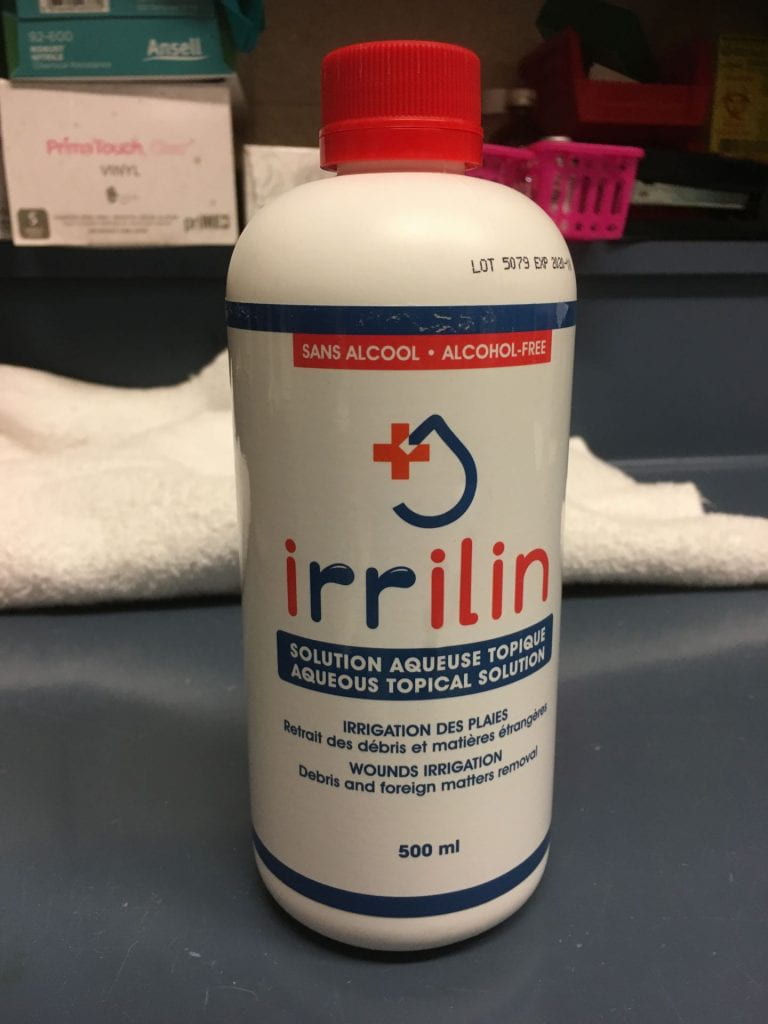Chapter 20: Table of Contents
Wound Lavage
Wound lavage is recommended in order to reduce contamination. To reduce discomfort of lavage, warm solution to ~ 30 max 35°C. Room temperature, and > 35°C lavage solution is uncomfortable. To obtain an ideal lavage pressure (7-8 psi of pressure), lavage should be delivered using a 35ml syringe and 18-gauge needle.

If a large amount of flushing is required, a fluid bag and extension set can be attached to the syringe via three-way stopcock to maximize efficiency. The ideal lavage solution is a sterile, painless, isotonic and balanced electrolyte solution. Although 0.9% sterile saline is commonly used, lactated Ringers solution (LRS) is considered the ideal solution for wound lavage. If antiseptics are used 0.05% chlorhexidine is recommended as an aqueous solution (scrubs containing detergents or alcohol should not be applied directly to wounds). Chlorhexidine should not be used in wounds that may connect with the meninges as it may result in seizure activity.

In grossly contaminated wounds (i.e. dirt, gravel, etc.), warm tap water (test on palmar surface of wrist where a temperature difference cannot be felt), although hypotonic and non-sterile, is effective for initial mechanical debridement. Tap water can also be used as an initial lavage for daily cleansing of wounds treated with honey or sugar. Final lavage prior to surgery (further decontamination) should be performed with LRS or sterile saline. Tap water is best used for superficial, shearing type injuries and should be avoided in wounds with deep pockets as drainage of water from these regions may be impaired. If bone segments or articular surfaces are exposed, the use of LRS or sterile saline solution is preferred.



